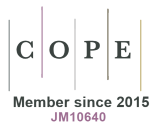Downloads
How to Cite
Chen, S., Datta-Chaudhuri, A., Deme, P., Dickens, A., Dastgheyb, R., Bhargava, P., Bi, H., & Haughey, N. J. (2019). Lipidomic characterization of extracellular vesicles in human serum. Journal of Circulating Biomarkers, 8(1). https://doi.org/10.33393/jcb.2019.2099
Issue
Section
Original research article
Statistics
- Abstract views - 2448 times
- PDF downloads - 1758 times
Sign up
banners150
Most popular articles in the last 30 days
-
182
-
129
-
107
-
81
-
70









